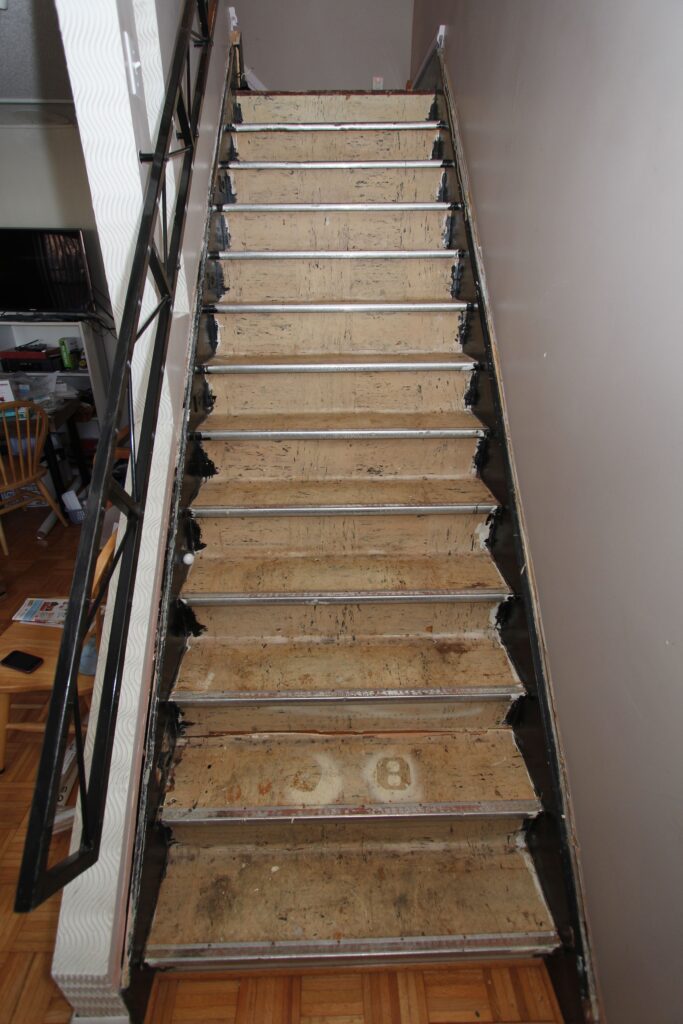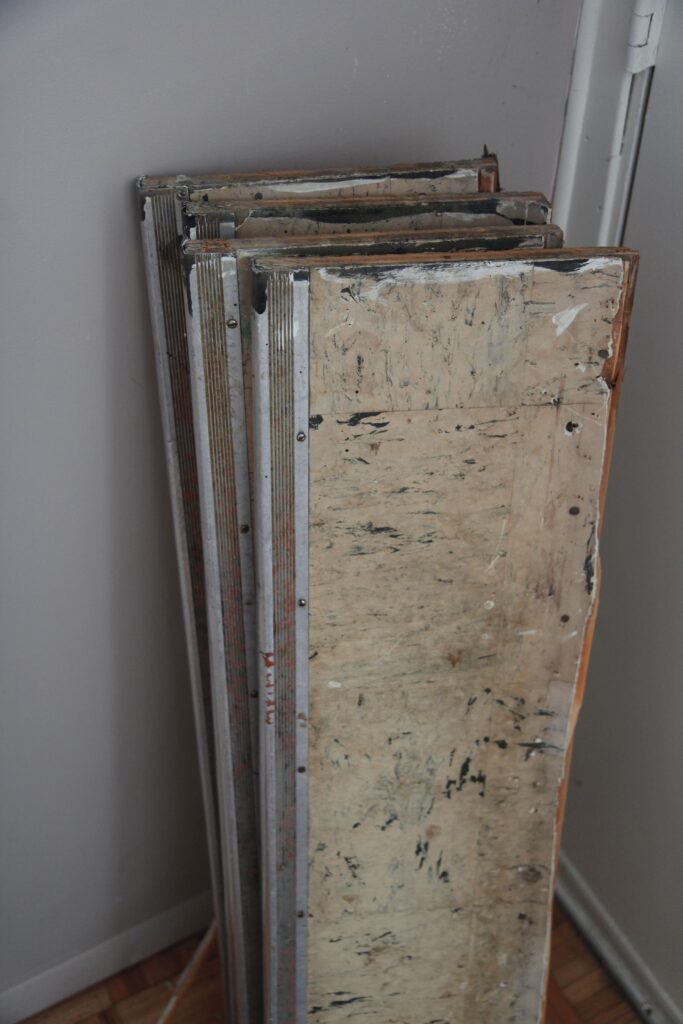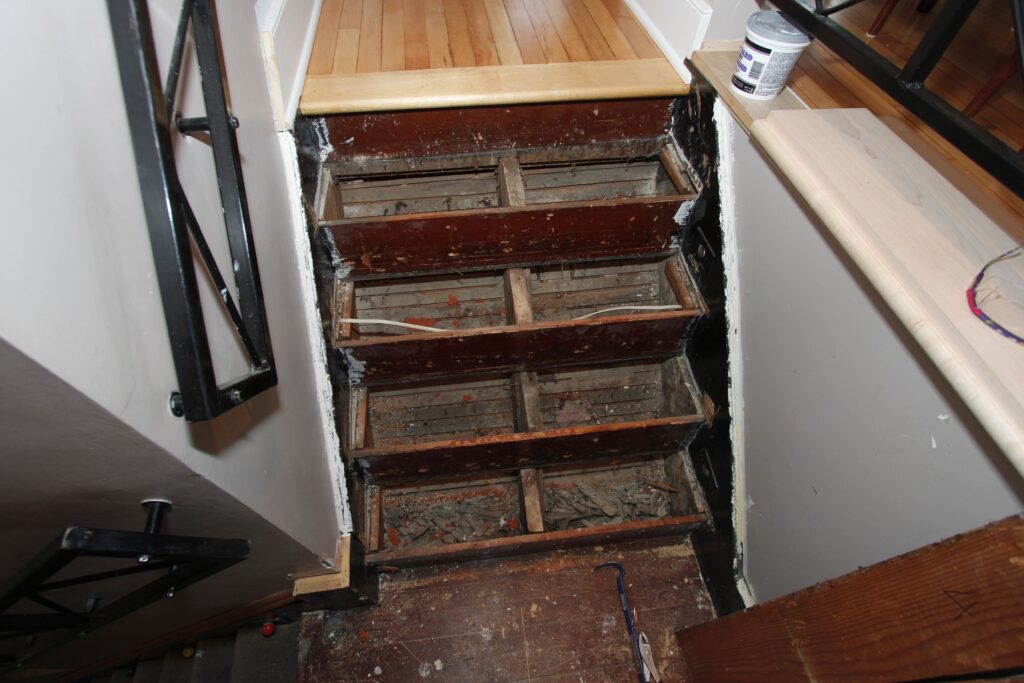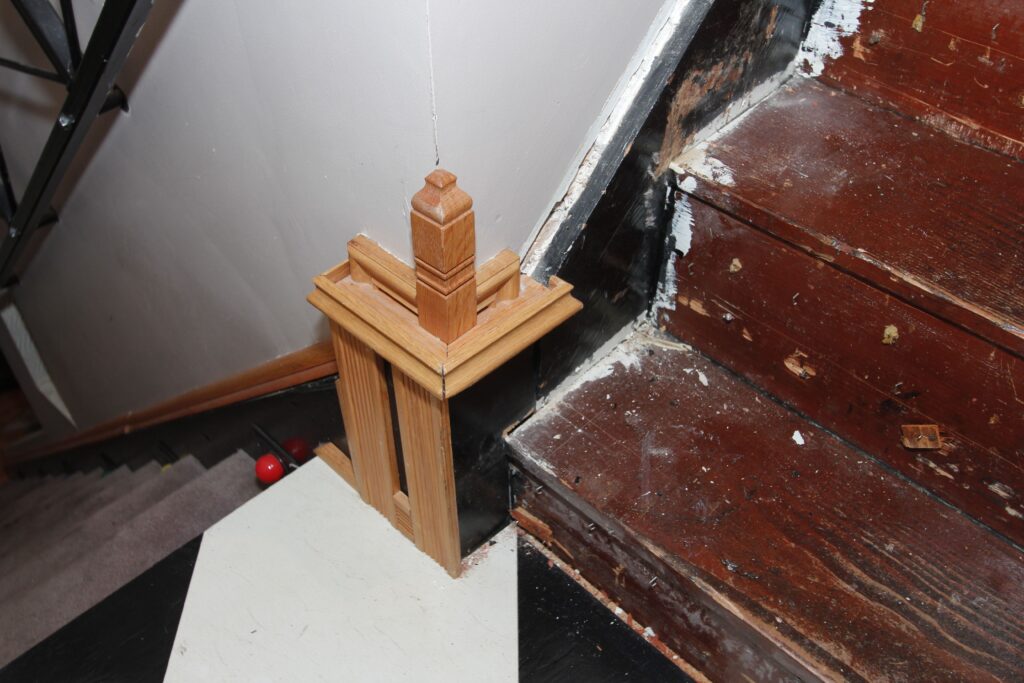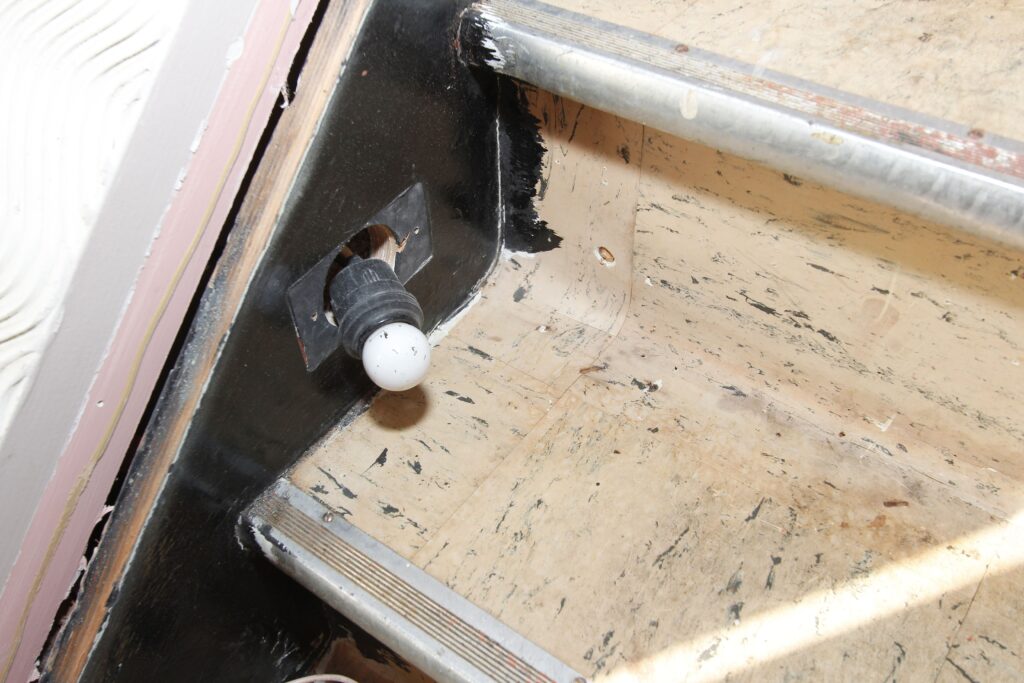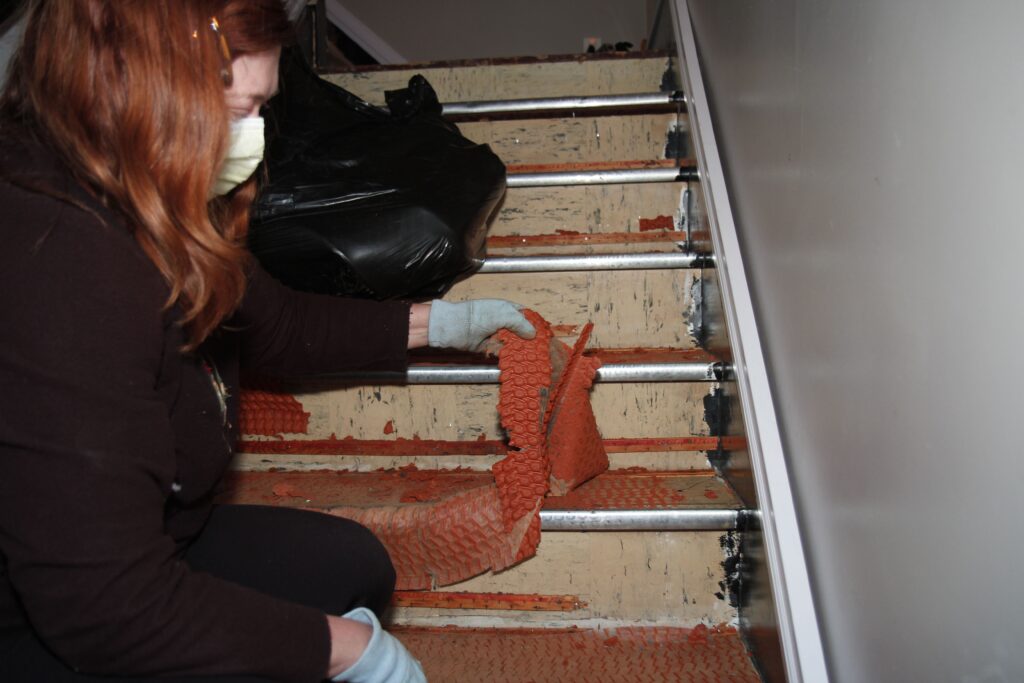
Having beautiful plans for how something is going to be does not really acknowledge how things actually are. In order to “get there from here” requires that the existing stairway be stripped back to its basic elements. The carpet must be removed, and then the underlying treads and risers would be replaced by new ones. It’s all so easy, on paper.
In practice I discovered that the carpet could be removed, albeit with care. The underlying carpet pad had fossilized and its removal involved clouds of petrified rubber dust. The installers had made sure that the carpet pad would never be subject to lateral shifting by the use of a high density staple gun. Or maybe they got their staples for free. It took forever to remove them all.
Underneath the carpet was a previous attempt to fix the stairway. Each tread had been capped by a new one, of plywood, extending the tread by about an inch, so that there was a slight extension over each riser. This actually meets modern stairway codes: the tread should stick out slightly over the riser, not too much, not too little. Look at your stairs and you will see it. It makes a big difference in how effectively the stairs are climbed.
The tread upgrade had improved (slightly) the navigation of the stairway, but it had resulted in the last step at the top being “shallow”. It was already a short riser (the original stairway designer seemed to have computational troubles at the top and bottom-most step), but now, with the additional tread overlay thickness, it was unexpectedly shallow, and people sometimes “stumbled” at the top of the stairs onto our finished second floor.
Pulling off the secondary treads revealed the original stairway. The treads and risers seemed to be pine, and beat up by the years. My plan was to replace them with maple, to match the flooring that had been restored. It should be simple. Pull off the treads and riser from the “stringer” (the wooden rail that was cut in the zig-zag form to support the steps), and substitute maple replacements. How hard could it be?
I discovered that I could, with some effort, remove the treads, mostly intact. But This Odd House held true to its reputation and removing the risers turned out to be impossible. The designers of this staircase had built a “top-stringer”, or stairway skirt, that resulted in each riser being structurally trapped between it and the support stringer beneath. To free them would require complete dismantling of the stairway. I couldn’t do it.
But I could leave them in place and mount the new risers over the old ones. The treads would be completely replaced, since they weren’t trapped in the structure. A plan was made, one that called for modifying conventional treads and risers to make my new stairway. All I needed were the raw materials, and a few new tools.
